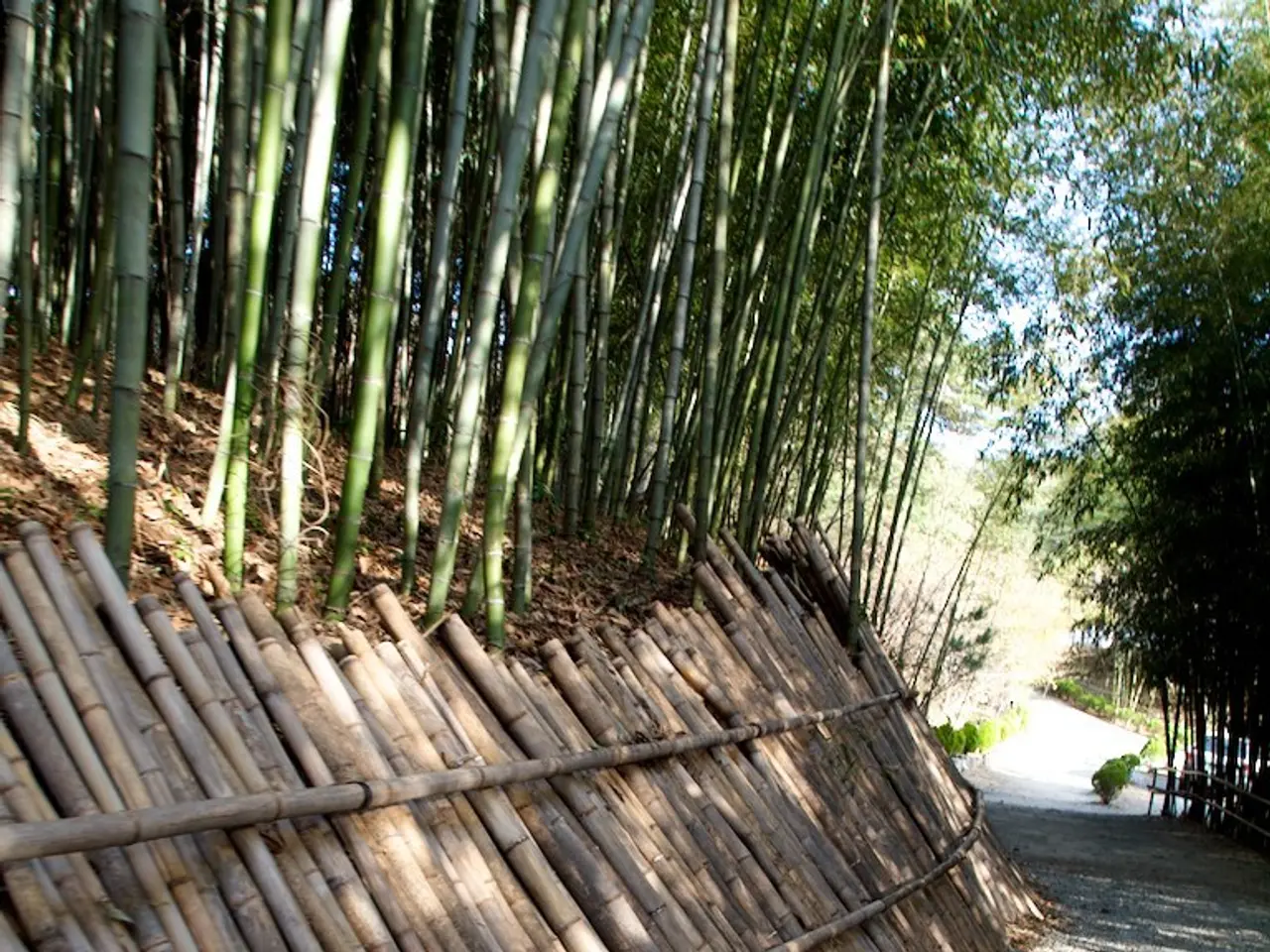Important Soil Factors to Keep in Mind When Planting Bamboo in Your Garden
Bamboo, a versatile and popular plant, thrives in specific soil conditions to ensure healthy growth. Here's a guide to understanding the ideal soil conditions for both indoor and outdoor bamboo plants.
For most bamboo species, well-draining, loamy soil is the ideal choice. This type of soil retains moisture without becoming waterlogged, which is crucial for bamboo's root development. The soil should also have a slightly acidic to neutral pH around 6.0, and benefit from organic matter to promote robust growth.
When it comes to indoor bamboo, such as Lucky Bamboo, a soil mix of well-draining loamy soil is recommended. This can be a mixture of potting soil, peat moss, perlite, or a combination like 50% garden soil, 30% cocopeat, and 20% compost. The soil should stay consistently moist but not soggy, with watering triggered when the top inch feels dry. Pots with drainage holes are essential to prevent water logging.
Outdoor bamboo, particularly those used for screening or privacy, require a loamy soil rich in organic matter. This ensures good drainage and aeration, which is key as bamboo roots do not tolerate standing water. The soil pH should be near 6.0, and spacing plants about 1 meter apart allows faster and healthier growth.
In general, bamboo plants prefer soil that drains freely but retains some moisture consistently. Adding organic compost before planting improves soil fertility, moisture retention, and root health.
Organic mulch can also be used to improve sandy soil over time by reducing moisture loss, providing organic matter, and preventing grass and weeds from growing. Improving sandy soils can be done by working in organic materials like compost or composted manure. Bamboo loves a good mulch layer (50 to 100mm deep) and regular fertilising.
Mulch acts as a blanket for the soil, helps prevent soil from drying out or freezing, decomposes and feeds the bamboo, and acts as a weed barrier. Compost made from grass clippings, leaf mould, manure, sphagnum peat moss, coconut coir, or vermiculite can all improve sandy soils.
Silica, found in bamboo leaves themselves, gives off an alkalizing effect on the soil, reducing heavy metal concentration and stimulating better nutrient absorption for plants. However, it's important to note that while materials like sphagnum peat moss, coconut coir, or vermiculite can improve the moisture retention capability of sandy soils, they do not address the lack of nutrients.
In conclusion, understanding the soil requirements for bamboo is essential for promoting healthy growth. Well-draining, loamy soil with a slightly acidic to neutral pH and rich in organic matter is ideal. Regular mulching and fertilising also contribute to a thriving bamboo ecosystem.
Adopting a home-and-garden lifestyle, one should pay attention to the soil conditions for successful bamboo gardening. For instance, indoor bamboo like Lucky Bamboo requires a soil mix of well-draining loamy soil, while outdoor bamboo prefers loamy soil rich in organic matter for optimal growth.




